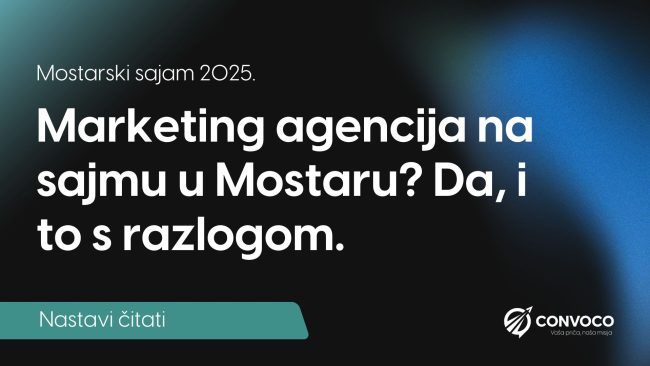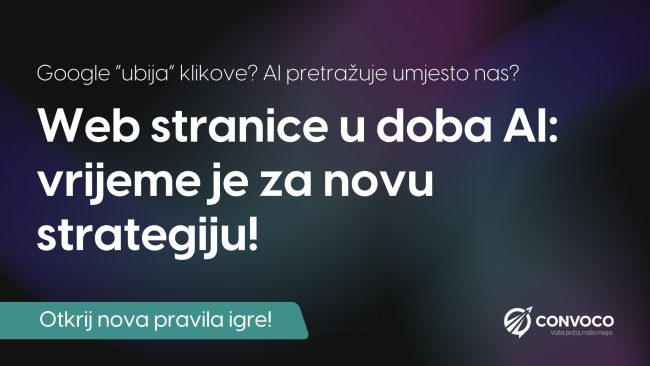Convoco
THE TEAM
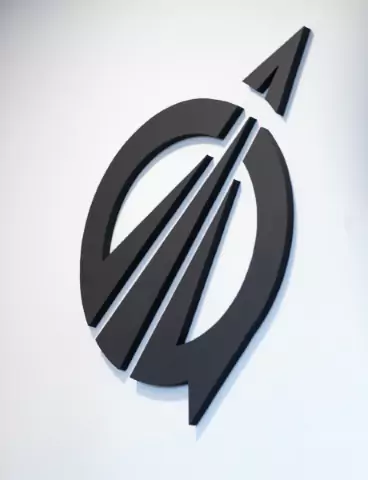
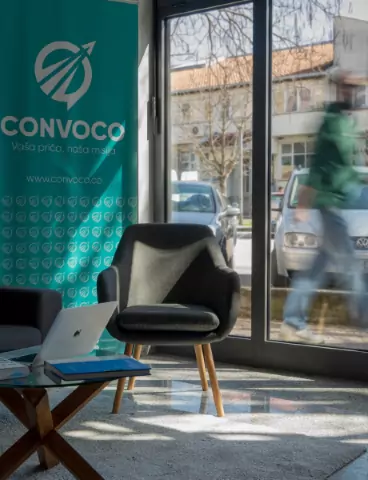
Every brand has its own voice – our job is to help you shape and convey it. Through design, content and technology, we create solutions that are not only functional, but also authentic and effective in the long term.
CONVOCO means “deciding together” – and that’s exactly how we approach every project. No complications or unnecessary technological jargon. Just honest collaboration, clear communication and measurable results.
Our philosophy is simple: we understand your goals, speak your language and deliver results. Each project is tailored to your needs, because we believe that there are no universal formulas for success.
Convoco
SERVICES
Our goal is clear: to tell your story in a way that captures attention and brings results that improve your business.

Websites and stores
Websites and stores as powerful tools for your success.
Website creation
What does website development involve?
Creating a website for us is not just a beautiful homepage and contact form. It is a whole process in which we develop the design, develop functionalities, optimize for mobile phones and tablets, adjust SEO basics so that Google loves you immediately, make security settings so that you can sleep peacefully and teach you how to manage content. All in one place, without complications. Because we believe that a website should work for you, not the other way around.
How long does it take to create a website?
For a standard website, expect a rough estimate of 3 to 6 weeks. Of course, it all depends on the complexity of the project, the speed of delivery of materials, and how many times we “bounce” ideas together. We don’t like to rush through important details – if we need a few extra days for fine-tuning, we’ll take them. Our goal is to deliver something that both you and we can stand behind with pride.
What is the price of creating a website?
Initial prices for website development are clearly defined in our price list and depend on the type of project, number of pages, special functionalities and customizations. With us you can expect transparent prices, with no hidden costs – everything is always open and agreed upon at the beginning, with no hidden costs.
Why is it important to have a professionally designed website?
Because first impressions are no longer a matter of personal sympathy — they are a matter of “survival” in the marketplace. Today, a website is your first and often most important presentation to clients, customers, and partners. An amateurish website can cost you serious opportunities, while a professionally designed website builds trust, clearly conveys your message, and helps you stand out from the crowd. In short: don’t view your website as an expense, but as an investment in the development of your own business.
Creating an online store
What does creating an online store involve?
Creating an online store with us implies much more than “basket and checkout button”. From initial consultation and design adapted to your brand, through the development of functionality such as product variations, coupons and payment methods, all the way to SEO optimization, security settings and testing. Each store is adapted for mobile phones, and we make sure that the administration is clear, without you having to study computer science. In short: everything you need to start selling — stress-free.
How long does it take to create an online store?
Standard online store development takes between 5 and 8 weeks, depending on the complexity of your project. Smaller stores can be completed faster, but more serious projects (multiple categories, complex shipping options, ERP integration) should take a little longer. We work thoroughly, because we know that a webshop must be reliable — not a breeding ground for “bugs” and headaches.
What is the price of creating an online store?
The price of creating an online store depends on the size, number of products, integrations (such as card payments or delivery services), and additional requirements such as multi-country display, multiple currencies, etc. Starting packages are clearly defined in our price list, with no hidden costs. We will adapt the project to your budget, but always with a clear agreement on what is included — so there are no surprises.
What do you need to prepare to create an online store?
To make sure everything runs smoothly, it’s ideal to prepare basic product information (names, prices, descriptions, images), shipping and return policies, payment methods you want to offer, and basic texts like “About Us” and “Terms of Use.” If that sounds like a lot of work — don’t worry, we’ll walk you through everything you need to prepare, step by step. We won’t leave you to navigate the forest of technical terms on your own.
Why choose professional online store creation?
Because a webshop is not just a “pretty showcase” — it is a tool that must work fast, stable and be ready for customers 24/7. Amateur-made stores often break under load, ruining the user experience and losing sales. A professionally made online store means better security, better SEO position and more conversions. If you plan to sell seriously, it is important to have a serious foundation.
Web maintenance
What does the web maintenance service include?
Web maintenance is not just an occasional “click update”. It’s about regular security updates, backups, site health checks, loading speed optimization, technical support and monitoring of potential problems. In addition to all this, we also make sure that your SEO does not suffer due to technical failures. In short: we keep your website running fast, secure and stable — while you do your work without worry.
Why is web maintenance important?
Without regular maintenance, even the most beautiful website will start to “creak” over time — slow loading times, security holes, incompatibility with new software versions… All of this leads to a poor user experience, loss of visitors, and a drop in Google rankings. Professional maintenance extends the life of the site, protects your data, and your reputation. In short: prevention is always cheaper and less painful than cure.
How often does a website need to be maintained?
We recommend at least monthly technical maintenance — this means security upgrades, speed and security checks, backups, and basic optimizations. If you have a webshop or a more active site with a blog, then more often. With us, you can choose between a standard monthly maintenance package or a customized plan according to your needs. We are flexible, but we do not compromise on quality.
What is the cost of maintaining a website?
The maintenance price depends on the size and complexity of your site and the type of service you choose (basic maintenance, advanced maintenance, regular SEO optimization, etc.). Our price list clearly states all options, with no hidden charges. For simple sites, the price is very affordable, while webshops or more advanced projects have slightly more extensive packages — but always in line with what you really need, without “inflating” the costs.
What if I don’t maintain my website?
If you choose not to maintain your website, you risk much more than just slow loading. Outdated software versions are prime targets for hackers, which can lead to serious security issues, data loss, or even site shutdown. In addition, a poorly optimized site ranks lower on Google, and visitors lose trust. In short: without maintenance, a website will sooner or later become like an old house falling apart — and the damage is difficult (and expensive) to repair.

Social networks
Your brand, your story – and we tell it where your audience is most active.
Profile management
What does the profile management service include?
Managing your social media profile is not just about posting a photo with “happy monday”. With us, managing includes analyzing your brand, creating content (texts, visuals, stories), posting regularly, responding to comments and messages, monitoring statistics, and suggesting optimizations. In short, we make sure that your presence on social media is not haphazard, but strategic and consistent — all without you wasting time on “which hashtag to use”.
Why is professional leadership important?
Social media is your online “window seat,” the place where people often first come into contact with your brand. If your profile looks messy, inactive, or uninspired, you’re giving the same impression to your business. Professional management means a consistent visual identity, quality content that tells your story, and drives engagement. In short: serious approach = serious results.
What is the cost of maintaining a profile?
The price of maintaining a profile depends on the number of posts per month, the number of channels you want to actively maintain (Instagram, Facebook, LinkedIn, etc.), advertising needs, and additional services such as photography or video production. With us, everything is clearly defined in the price list — you choose the package that suits you best, without fear of hidden costs and “fine print” that no one reads.
How often should I post?
The ideal posting frequency depends on the type of business and target audience, but the rule is simple: consistency is key. Better two quality posts per week than seven half-hearted ones. For most small and medium-sized brands, 2–5 posts per week + active communication through stories is optimal. We create a plan that suits your pace and capabilities — because there’s nothing worse than a profile that starts out ambitious, and after three weeks goes as quiet as a mountain lodge in November.
How to track results?
Results are measured through several things: growth in the number of followers (but real, not purchased), increased engagement (likes, comments, messages), traffic to the website and, most importantly, real inquiries and sales. Through monthly reports, we monitor all key metrics and provide concrete suggestions for optimization. We are not just “pumping up the numbers” — the goal is for your business to really feel the benefits of every euro invested.
Content creation
What does creating content for social media mean?
Content creation isn’t just about writing a description and putting up an image from the archive. It’s about thinking through the message, choosing a tone, visual editing, adapting to the platforms, and most importantly — connecting with your audience. It involves writing copy that sounds human (not like a generic ad), designing visuals that grab attention, and assembling the content into a coherent whole. At the end of the day, content isn’t there to fill a calendar — it’s there to build your brand.
What types of content do you publish?
We publish everything that makes sense for your brand: educational posts, interesting facts from the industry, behind-the-scenes moments, useful tips, promotions, reviews, animations, story series… There is no one-size-fits-all template — we always create content based on your audience, tone, and goals. Because a profile that looks like it’s run by someone “from the outside” is not content, it’s noise.
How much content do you prepare per month?
It depends on the package you choose and the publishing rhythm that suits you. For some, 8 posts per month are enough, for others 20+, with stories and additional formats. We create a publishing plan in advance, send it for approval, and when everything is done — you no longer have to worry about a single period, comma, or hashtag. Each post is thoughtful, not made “just to get something published.”
Does CONVOCO agency come up with topics and write texts?
Of course. And we do it often — because we know that clients don’t have the time or inclination to think about content. We define the basic topics with you, and then we take over: we think about what to publish, write texts in your tone, create visuals, and submit everything to you for review. You say “okay”, we publish. And everyone is happy.
Why is it important to have quality content on social networks?
Because the competition is huge, and the audience’s attention is never less. Quality content attracts, retains and encourages interaction. It helps people remember you, trust you and want to work with you. Without it, your profile becomes a dead letter on the screen. With him — a tool that builds relationships, reputation and sales.
Creating a strategy
What does creating a strategy mean?
A social media strategy is the foundation — without it, posts feel like they’re being managed “on the fly.” A real strategy means knowing *what* we’re posting, *for whom*, *why*, and *how we’re measuring it. It includes analyzing your target audience, defining your tone of voice, content types, visual style, posting cadence, and clear goals. In short: without a strategy, you’re shooting blindly. With one, you’re hitting the mark.
Why is strategy important?
Because every brand is different. There is no “one size fits all” approach. Some should be witty, some professional, some inspiring. Without a strategy, it’s easy to slip into patterns that don’t tell your audience anything specific. And the result of that? Weak interaction, without any effect. Strategy ensures that everything we do has meaning, continuity and — a result.
What does a good strategy include?
It includes audience analysis (who we are addressing), goal setting (what we want to achieve), tone and style of communication (how we speak), visual identity (how we look), publishing plan (what, where and when), and metrics to measure success. We also analyze the competition and market trends — because we don’t work in a bubble. All in all: a working document that gives direction and saves time.
How long does it take to develop a strategy?
Depending on the complexity, between 5 and 10 working days. If it’s a new brand without any template — it takes a little more time to get everything right. If you already have some guidance, let’s speed up the process. In any case, we do not do it “in haste” — because a good strategy is not just a document that is read once. It is the base for everything that is done later.
Can I have a strategy and create the content myself?
Of course. We have clients who just want a strategy because they have an internal team that does the publishing. And that’s totally fine. We do the groundwork — audience analysis, tone of communication, suggested sections, publishing calendar, visual guidelines, and specific advice on what (not) to do. If you need help with content later, we can do that too — but we don’t push anything you don’t ask for.

Digital advertising
Advertising as an investment by which you reach the right audience at the right time. Every time!
Google advertising
What is Google advertising and how does it work?
Google advertising means that your company is shown to people who are already looking for you — either through Google search (Search ads), or through display ads on portals (Display), video ads on YouTube or even dynamic ads for webshops. You choose the goal, the audience and the budget — and we set up, optimize and monitor the results. In short: you pay to be found by those who are already interested. There is no more effective place for an ad.
What types of Google ads are there?
The most famous are Search ads — those text above the search results. There are also Display ads (banners on portals), YouTube video ads, Gmail ads, and Shopping ads for webshops. Each has its own purpose: some are great for quick queries (eg “plumber Mostar”), some for building visibility or remarketing. We choose the combination that makes the most sense for your goal.
How much does Google advertising cost?
Google advertising does not have a fixed price. You set the budget, and Google spends it per click or impression. We start with a minimum monthly budget (details are in our price list), and everything else is scalable. It’s important to know: you can pay 1 KM for an ad, but if it leads to a bad page — you’ve wasted that dollar. That’s why we don’t just manage ads, we also pay attention to what happens *after* the click.
How do we know if an ad is getting results?
Google advertising is measurable down to the smallest detail: number of clicks, cost per click, queries, calls, website visits, conversions. We track everything through Google Analytics and Google Ads reports. But we don’t just give you numbers — we explain them and suggest what to do next. Because a click without a conversion is “like a light on without a bulb.”
Google advertising VS social networks?
It depends on what you want. Google Search ads capture people who already have intent (e.g. “carpentry Ljubuški”), while social media works more to generate interest. Ideally, you’ll want to combine both — Google for queries, social media for visibility and emotion. But if you have a limited budget and a clear product — Google is often the best first step.
Facebook advertising
What does it mean to advertise on Facebook?
Advertising on Facebook means that your ad gets directly in front of people who are potentially interested in what you have to offer — whether they’re from your city, have specific interests, or have already visited your website. Precise targeting, flexible budget, and huge reach. We arrange it so you don’t waste money on worthless clicks.
What are the advantages of advertising on Facebook?
Facebook has a huge number of users in the region and an even greater potential for precise targeting. We can target by location, age, interests, behavior, even what they viewed or clicked on. And best of all — we can measure it all. For small and medium-sized businesses, Facebook is often the fastest way to reach a local audience without a large budget.
How much does a Facebook ad cost?
The minimum budget can be 2-3 KM per day, but realistically — for the campaign to “have power”, we recommend the minimum monthly amount (specified in our price list). The cost consists of the ad budget that goes to Facebook, and our agency fee for placement, optimization and reporting. Everything clear, everything transparent.
What types of ads can we use?
Call-to-action image, video, carousel (multiple images/products), message ads, lead forms, post promotions… it all depends on the goal: do you want more calls, more clicks, more visits? We choose the format that can bring it, not the one that “looks nice”.
How quickly are results seen?
In some cases immediately, but most often the campaign takes 5-7 days to stabilize. We track clicks, calls, messages and web visits. Our goal is not just “likes” — but a concrete result that can be felt in business.
Instagram advertising
How does advertising on Instagram work?
Instagram ads appear within a user’s feed, stories, and reels — and look almost identical to regular posts. The only difference? They have a clear goal: to drive a click, a message, or a visit. We design them to look natural, but to make a big impact. Because on Instagram, first impressions are everything.
Why advertise on Instagram?
Instagram is ideal for visual brands — restaurants, hair salons, wineries, fashion and lifestyle products. People come here for inspiration and beauty. If your offering has a story that can be told visually, an Instagram ad is a great way to show that to an audience that likes to “scroll, look and buy”.
How much does Instagram advertising cost?
The budget works the same as on Facebook — a daily or monthly amount that you control. We put together a campaign, test multiple variations, and recommend how much you really need. Our pricing clearly lists packages that include everything from visuals to reports.
Which ad formats perform best?
Story ads (9:16) and short reels currently have the best engagement. But classic square ads (1:1) are not to be discarded either. It all depends on your product and message. We test multiple variants and monitor which one works best with the audience.
Can ads only run on Instagram?
Yes — and precisely. We can choose to show ads only on the Instagram feed, only in Stories, or only in Reels. You can have completely different messaging and design for Instagram than for Facebook — and that’s an advantage if you have an audience that uses one platform more than the other.
years of experience
satisfied clients
Completed projects
Portfolio
WORK
Designed. They were building. Inspired. Behind us are numerous successful projects for clients who believe in the power of stories. These are some of them.
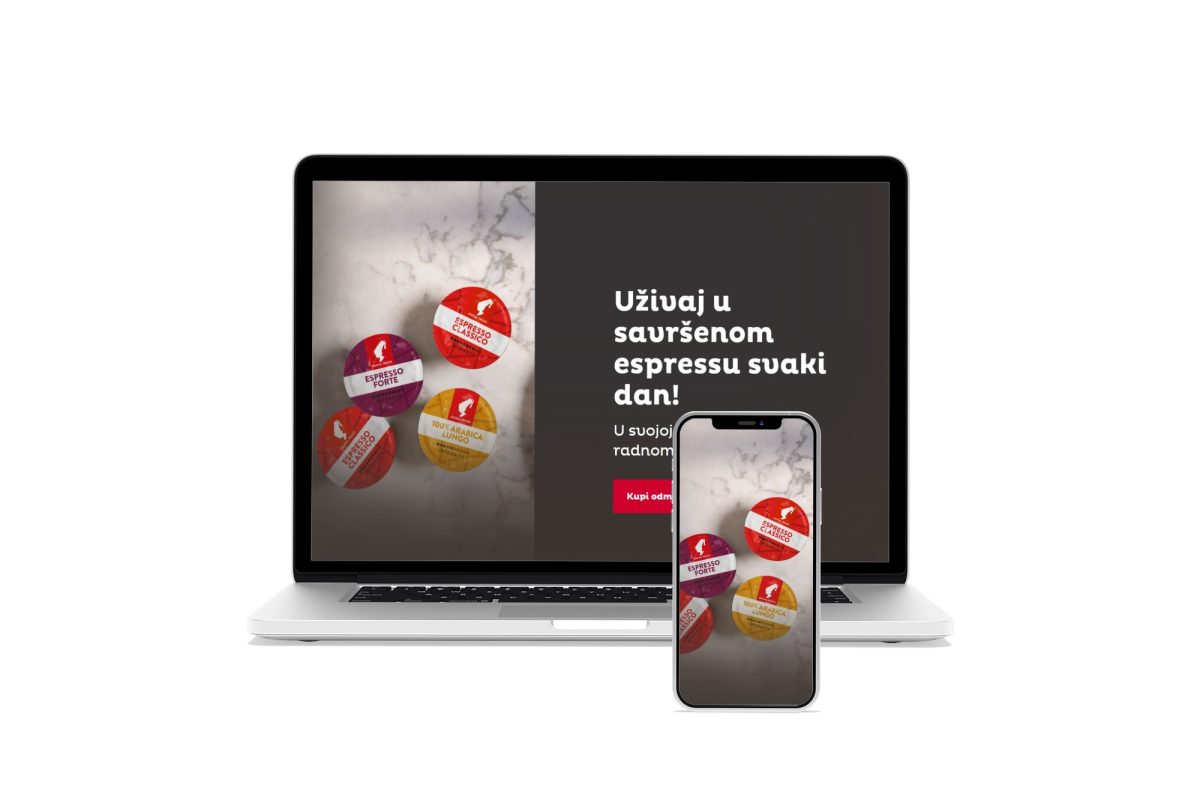
Julius Meinl
Web trgovina, digitalno oglašavanje

LTB
Izrada web trgovine
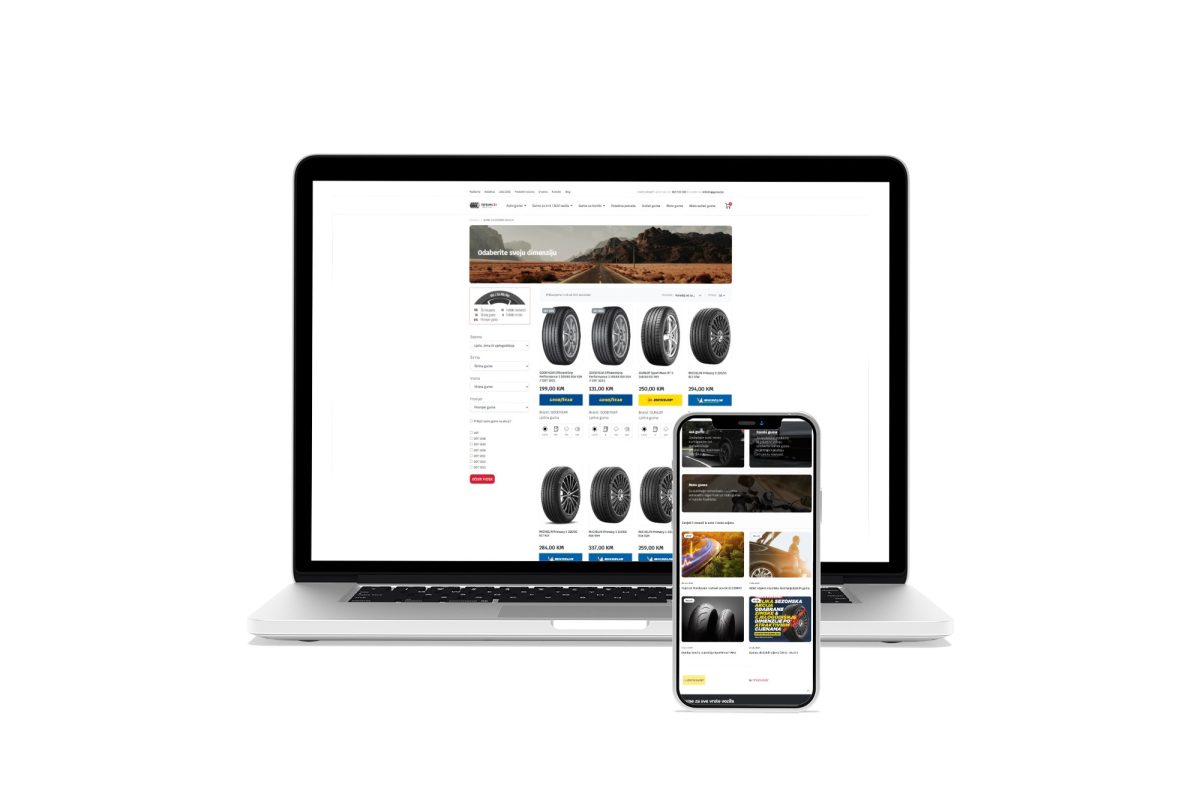
Top Guma
Izrada web trgovine, digitalno oglašavanje
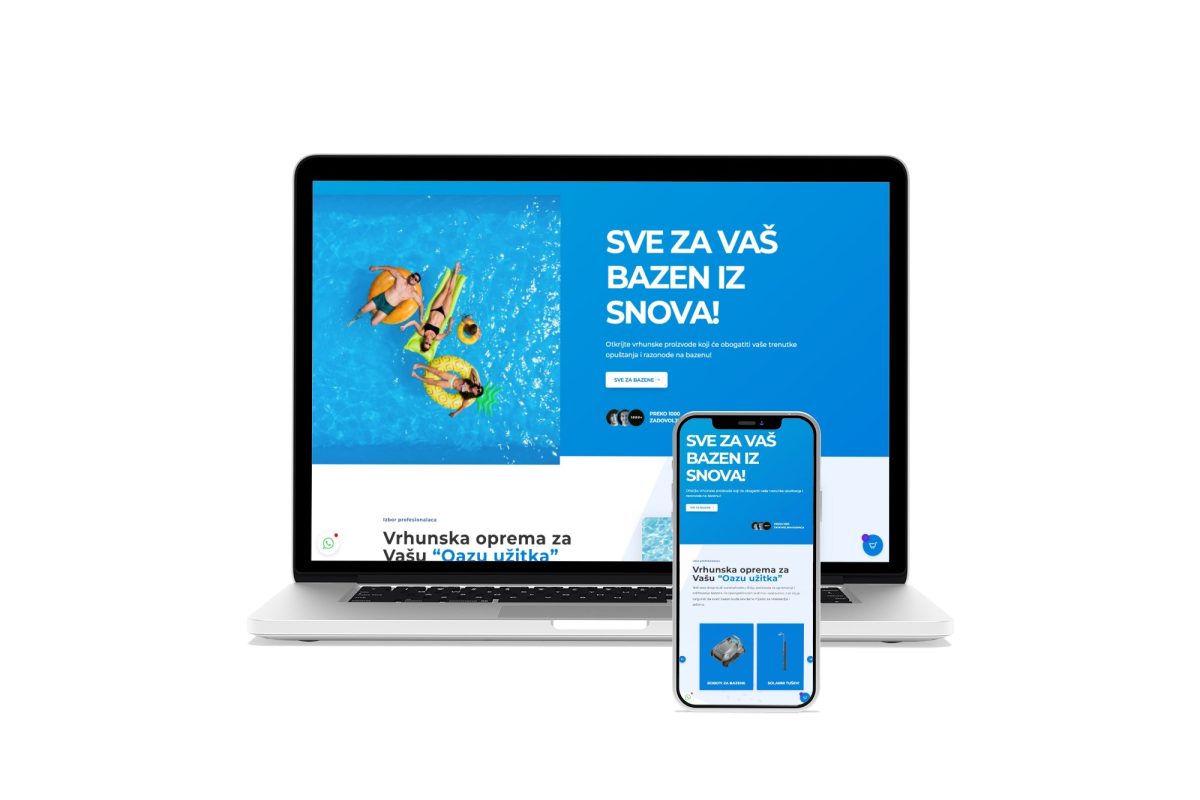
Rivijera bazeni
Izrada web trgovine
Convoco
SERVICES
We don’t offer everything to everyone – we look for the best path to your goal. Sometimes it’s a new website, sometimes it’s an ad that hits the mark. And sometimes it’s just a different way of looking at things. Here’s how we do it in practice

Do you need new clients?
We attract the right audience, guide them through a clear process — and convert visits into concrete inquiries and sales.
A website that works for you
What does it mean for a website to “work for you”?
This means it’s not just beautiful, it’s functional — it guides visitors from first impression to a specific inquiry, reservation, or purchase. Every part of the page has a purpose: the headline conveys value, the content answers questions, and the call to action clearly states what to do next. A page that works for you brings opportunities, not just visits.
We have a page, but it’s not bringing results.
Maybe nothing — except that it’s designed more for you than for your customers. If it doesn’t communicate clearly, doesn’t have a structure that guides the visitor, doesn’t have compelling elements like reviews, specific offers, and calls to action — it loses attention. We analyze and customize the page so that it answers the question: “Why you?”
What does a good sales website include?
A clear offer. Visible contact options. Fast loading. Well-placed content. Design that helps, not distracts. Trust (reviews, references, photos). And the feeling that someone thought about the user. We combine all of this into a meaningful experience, without overwhelming it with content.
How do we know if a site is really effective?
We don’t guess — we track. We incorporate tools like Google Analytics, click tracking, forms, calls. If you get more inquiries, more calls, more sales — we know it’s working. If not, we know where to look for the problem. And that’s the advantage of digital – everything can be measured.
Do I need a new page or is the current one ok?
We don’t do a “delete everything” right away. First, we look at what you have, what can be saved and improved. If the foundation is good, a few key changes are often enough for the site to start breathing and bringing results. If not — we’re honest. The goal is to have a site that works. Not just have a “site.”
We have a great product/service, but no one is finding us
We have a good offer, but no one knows about us?
Because visibility doesn’t happen by chance. Google doesn’t recommend you if it doesn’t know about you. People don’t talk about something they don’t see. And the media doesn’t write about those who are silent. Being found means being present — online and offline. We do a combination of: SEO, PR, backlinks, stories that spread, and signals that algorithms recognize.
Is SEO still profitable?
More than ever — but not alone. SEO today is not just “keywords and technical optimization,” it’s about authority and relevance. Google loves brands that people search for, that are written about, and that are linked to from other quality sources. We combine technique with context. And that’s why it delivers results.
How does PR help us to be more visible?
When other portals, media outlets, or brands link to you — Google sees it as a “vote of trust.” When someone mentions you in an article or interview — your story reaches an audience you wouldn’t reach on your own. Backlinks and PR are like digital recommendations. And we know where and how to get them — without the hassle.
Can offline marketing also influence online results?
Absolutely. People see your ad, flyer or banner — and then they Google you. If they don’t find anything useful then, you’ve lost your chance. If they find a bad site — you’ve lost trust. Offline stimulates interest, online confirms it. That’s why we plan both.
How do we know that people are starting to notice us?
By increasing searches for your brand, increasing direct visits, backlinks, media mentions, and more inquiries that come “out of nowhere.” We run reports, track metrics, and let you know when something moves. Because visibility doesn’t always translate to sales — but it’s the first step to it.
Ads that don't sound like ads
Why don’t most ads work?
Because they try to sell too loudly and listen too little. People don’t respond to generic messages anymore. If an ad doesn’t hit a specific problem, doesn’t sound authentic, and doesn’t lead to the right place — it gets ignored. We make ads that blend with the platform, but stand out with their message.
How do we choose who to target?
We combine data from Google, social networks and your real audience. We define who your ideal clients are, where they move, how they think — and what is important to them right now. Then we don’t place ads to everyone, but to those who have a reason to see them.
Which ad format performs best?
It depends on the goal: if you want messages — a short story. If you want sales — a good video with a clear CTA. If you are building recognition — a carousel with emotion. There is no one format that does everything. That’s why we test, look at the data and adjust.
How much budget do we need for a specific impact?
We don’t create ads “just to make something work.” First, we assess the potential, where you are, and what you want to achieve. With us, budget is not a random number — it’s a tool we use wisely. Often, less money, but properly allocated, does more than a “big” campaign without focus.
How do we know that an ad really works?
We track clicks, inquiries, calls, messages, visits, purchases. And not just numbers — we look at behavior. If an ad attracts clicks, but no one stays — the problem is somewhere else. If it brings inquiries, but they don’t close — we know what to optimize. With us, reports are not just PowerPoint — they’re a tool for growth.

Do you need more visibility?
We help you be present and relevant — even when your audience isn’t actively looking for you.
Be present even when no one is looking for you.
Why is it important to publish even when there is no “action”?
Because trust isn’t created in a moment of need — it’s built through presence. When you communicate regularly on social media, you become recognizable. And when someone needs what you offer, they won’t even Google it — they’ll remember you.
What does “quality performance” mean?
It’s not just about pretty pictures or “norms.” A quality performance means knowing what you want to say, who you’re saying it to, and why you’re posting it in the first place. These are posts that have meaning and rhythm, that build a relationship, not just fill your feed. We help you set the tone, plan, and content — so you’re not just there “for the sake of it.”
How often should you publish?
It depends on the niche, but the rule is simple: better regularly than occasionally, in spurts. 2–3 times a week is enough if you have a quality plan and know what you want to say. More is not necessarily better — consistency and smart timing go a long way.
How do we measure efficiency?
We don’t just look at likes. We track engagement, messages, comments, how many people come to the site from social media and how they behave. But more importantly — we track the sense of trust that is created. When a client says “I’ve been following you for a while” — that’s success.
We have a profile, but we don’t know what to post. What then?
That’s why there’s a strategy. We define the columns, the topics, the tone and the rhythm. No more panic every Monday about “what are we going to put next”. You’ll have a plan that works, content that’s planned in advance and room for spontaneity when needed. And we’re behind you, whether we’re just helping out — or running everything for you.
Show up where the audience doesn't expect you.
Why is it important that others talk about us?
Because your own story always sounds better when someone else tells it. Media, portals, industry blogs — all of this builds authority and the impression that “if they write about it, it must be worth it.” PR is not just advertising — it’s about creating a perception of trust and importance.
How does PR help attract new audiences?
PR puts you in front of people who would never seek you out on their own. Appearing in an article, interview, or even a local portal opens the door to new audiences. Some will respond immediately, some will remember you — and reach out when they need you. Visibility isn’t always instant, but it has a trickle-down effect that fills the pool.
Where can we appear through PR?
It depends on your industry and goals. It could be a professional portal, local media, lifestyle magazine, newsletter, podcast or even an industry conference. We choose channels that make sense for your business, not just the ones where everyone wants to be “because it sounds cool”.
How do we measure the impact of PR activities?
We track the number of posts, reach, brand mentions, website visits after posts, new queries, and the growth of searches for your name on Google. PR is not always immediately measurable as a click on an ad — but it is felt through building image and trust that later facilitates each subsequent contact.
How long does it take for a PR campaign to bring results?
PR is not a sprint, it’s a marathon. The first effects can be seen in a few weeks, but the real power comes through continuity — when more sources start connecting with your brand. We set realistic expectations and build the story step by step — without big words and empty promises.
Google loves “fresh.” The audience loves useful.
Why is publishing content regularly important?
Because Google prefers websites that are alive, not those that are published and forgotten. Regular content shows that you are active, up-to-date and relevant. The audience, on the other hand, likes useful information that makes their life or work easier. Regular content satisfies both parties.
What is included in content marketing?
Blog posts, guides, case studies, news, infographics, useful resources — anything that helps your audience and builds trust. Content marketing is not just “writing articles” but strategically creating content that attracts, informs, and leads to engagement or purchase.
How does content marketing help SEO?
Fresh, high-quality content gives Google more “material” to index. More keywords, more relevant pages, more opportunities to appear in search results. Good content naturally attracts backlinks — which further strengthens your SEO position. In short: content and SEO go hand in hand.
How often should new content be published?
Ideally, at least once or twice a month. More important than frequency is consistency — and quality. Better one good article a month that’s worth something than five generic ones that won’t help anyone. Together, we’ll create a plan that makes sense for your industry and resources.
How do we know that content really helps?
We track how many people read the content, how long they stay on the page, what keywords they come from, and how many of them later take action (inquiry, call, purchase). Content that brings value is measured in the long term — because real results come when you are useful when the client is just thinking, not when they have already made a decision.

Do you want to become a leader in your niche?
A leader does not become the one who talks the most — but the one who delivers value.
First choice when your service is requested
Why is it important to be first on Google?
Because most people click on the first or second result Google gives them. If you’re not there, you practically don’t exist. Being first on Google means more visits, more queries, and more chances to make sales — without having to constantly invest in ads. And what’s better: these are people who are *already* looking for you.
How do we become the first choice in searches?
Smart SEO. Not just by inserting keywords, but by understanding what people are really looking for and how they think. We do web structure, content, technical optimizations and build the authority of the site through links and recognition. Gradually, but thoroughly.
How long does it take to achieve results?
SEO is not “let’s get started and you’ll be number one tomorrow.” Depending on the competition and the current situation, we see the first serious improvements in 3 to 6 months. But once you position yourself, the advantage remains — and generates results long after you’ve put in the effort.
What if the competition has been investing in SEO for years?
No problem — you just need to be smarter. We focus on niches, local searches, long-tail SEO, and strategically build your presence where your competition sleeps. We don’t try to outvote them, we try to outsmart them.
How do we know that SEO is delivering results?
We look at specific things: growth in visits from Google, growth in keyword positions, the number of queries that come without paid ads. We measure all of this and report it transparently. There’s no “trust us” with us — with us you have the numbers.
Knowledge that others recognize and value
Why is it important to share knowledge through content?
Because we do not build authority by talking about ourselves — but by helping others. When you make it easy for people to learn, understand, or solve a problem through your content, they naturally see you as an expert they can trust. Sharing knowledge is the best form of marketing.
What types of content build authority best?
Guides, blogs, FAQs, case studies, educational social media posts. It’s not just about writing — it’s important to write what the user needs at the right time. We help to find the right topics and the right tone.
How do we know which topics are relevant to our audience?
We look at what people are searching for on Google, what they’re talking about on social media, what questions they’re asking, and what problems they’re trying to solve. We don’t guess — we listen and analyze. This is how we create content that is not only read, but also brings inquiries.
How often should we publish professional content?
Quality is more important than quantity. It is enough to publish once or twice a month, but each piece of content has real value. When you have about 10 serious guides and articles, you already have a “knowledge base” that is constantly working for you. We create a publishing plan that suits your pace and resources.
How do we measure whether content really builds authority?
We track how many people read the content, how long they stay, how many times they share it, and most importantly — how often inquiries or collaborations occur after reading. True authority is measured not only by likes — but by consequences: who remembers you and who chooses you.
The biggest recommendation is when others talk about you.
Why are reviews and recommendations so important?
Because people trust people — more than ads. When they see real experiences from real customers, they make decisions more easily. A good reputation is not a luxury — it’s a currency. Reviews, testimonials, and success stories are often worth more than the most expensive campaign.
How do we collect and use reviews?
We don’t wait for clients to write something themselves (because rarely anyone does it spontaneously). We actively seek reviews after a successful job, ask the right questions, and help them express their experience. We package it all beautifully and place it where it needs to be: on the web, social media, in campaigns.
What are case studies and why are they powerful?
Case studies are stories that show how you specifically helped someone — from a problem to a solution. These are proofs that speak of your expertise without bragging. Real example, real story, real results. This builds credibility better than any advertising slogan.
How does reputation affect sales?
When you have a good reputation, clients enter the conversation with trust already established. You don’t have to convince them—you’re already convincing them. This reduces resistance, shortens the sales process, and increases the likelihood of closing the deal. In short: a strong reputation is the best salesperson you can have.
Can we control how others see us?
We can’t control everything, but we can influence a lot. Through systematic collection of positive experiences, strategic highlighting of the right stories and correct response to criticism, we build the image of a brand that is reliable, professional and trustworthy. Reputation is not left to chance — it is actively built.
CONVOCO
WHAT WE LEARN
Knowledge only makes sense if it is shared. That is why on our blog you will find tips, stories and strategies that we use in our daily work. From digital trends and marketing tricks to detailed campaign analysis, this is where we share what drives us.
A marketing agency at the Mostar fair? Yes, and for a reason.
Fairs are full of products. We brought – stories. And listened. Here’s what we learned.
How to measure advertising success?
Do you have a high ROAS? Maybe that’s not such good news. Here’s why that number is sometimes misleading—and what you should track instead.
Websites in the Age of AI
Zero-click searches and AI are changing the way people access information – but websites have never been more important. Here’s why.

